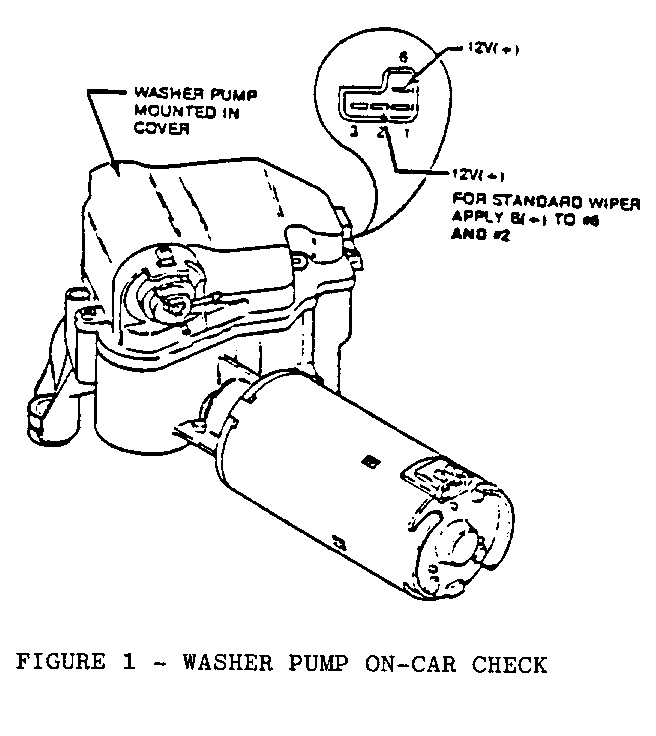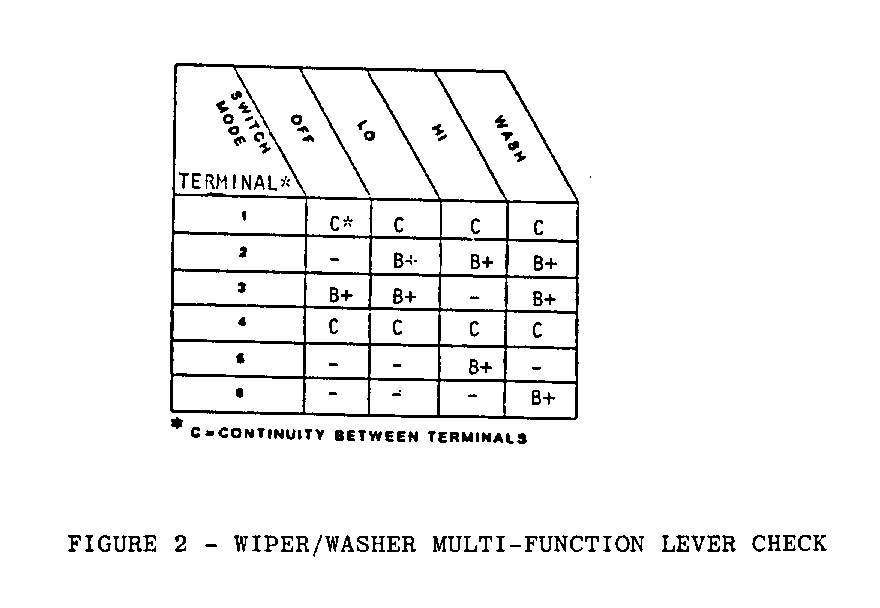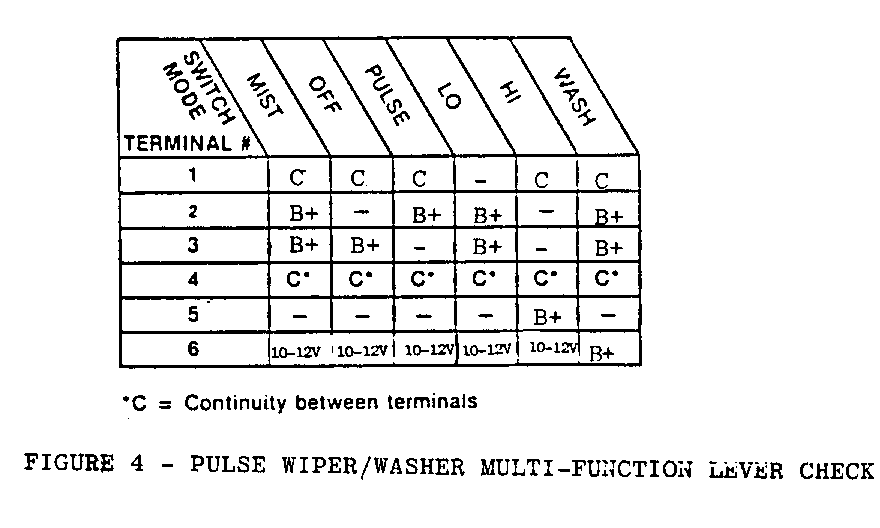REVISION TO WINDSHIELD WIPER INFORMATION-DIAGNOSTIC CHARTS

VEHICLES AFFECTED: 1984 'A', 'F' and 'G' Series
This bulletin revises the information and diagnostic charts, as described and shown, in Section 2 of the Fisher Body Service Manual.
PERMANENT MAGNET (PM) TWO-SPEED WIPER SYSTEM
A new two-speed permanent magnet windshield wiper motor is used as standard equipment on all 'A, F and G' Styles. The new wiper motor has an integral flex-vane washer motor mounted in the cover assembly. A circuit diagram is shown in Figure 2-1 of the Fisher Body Service Manual.
WIPER AND WASHER OPERATION
To operate the new two-speed wiper motor, move the multi-function lever to the low or high speed position. This completes the respective brush circuit to 12V(+) al the multi-function lever and allows the wiper motor to run at that speed. When the wash button is depressed, washer fluid is sprayed onto the windshield until the button is released. For diagnosis of problms in the system, refer to the new wiper/washer motor diagnosis Figure 3, attached to this bulletin. The new chart replaces Figure 2-30 in the 'A, X, J' and Figure 2-35 into the 'B, D, E, G and K' manuals.
WIPER MOTOR
Check for motor operation before removing from vehicle. Disconnect all wiring from wiper and using a jumper perform the checks outlined in section 2, Figure 2-4 of the Fisher Body Service Manual.
Figure 2-3 in the Fisher Body Service Manual is not used when diagnosing problems on the new two-speed wiper system.
WASHER PUMP
Check for washer pump operation before removing from vehicle. Remove cover harness connector and apply 12V(+) to No. 6 and No. 2 terminals as shown in the attached Figure 1 (Washer Pump On-Car Check).
The following illustrations have been revised in the Fisher Body Service Manual and are to be replaced with the attached illustrations:
Figure 2-7 (Wiper/Washer Multi-Function Lever Check) is replaced with attached Figure 2.
Figure 2-8 (Wiper/Washer Motor Diagnostic Chart) is replaced with attached Figure 3.
Figure 2-34 (Pulse Wiper/Washer Multi-Function Lever Check) is to be replaced with attached Figure 4.
Figure 2-35 (Pulse Wiper/Washer Motor Diagnostic Chart) is replaced with attached Figure 5.





General Motors bulletins are intended for use by professional technicians, not a "do-it-yourselfer". They are written to inform those technicians of conditions that may occur on some vehicles, or to provide information that could assist in the proper service of a vehicle. Properly trained technicians have the equipment, tools, safety instructions and know-how to do a job properly and safely. If a condition is described, do not assume that the bulletin applies to your vehicle, or that your vehicle will have that condition. See a General Motors dealer servicing your brand of General Motors vehicle for information on whether your vehicle may benefit from the information.
